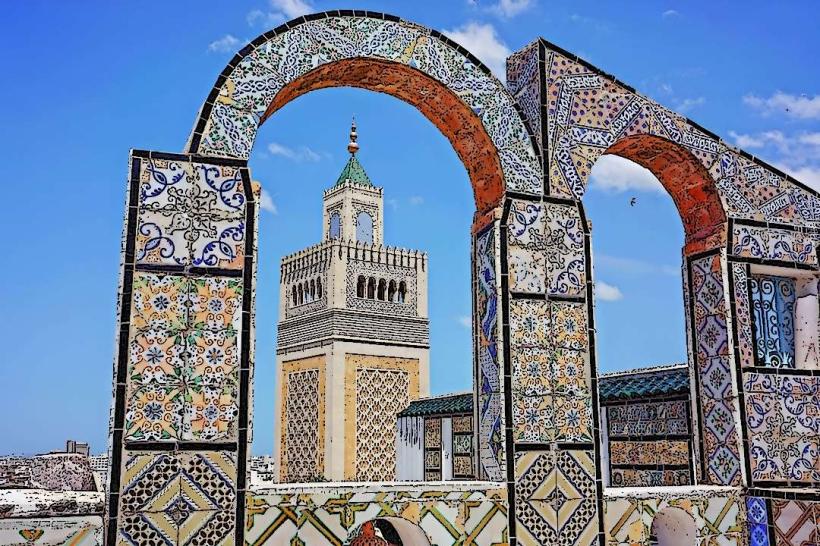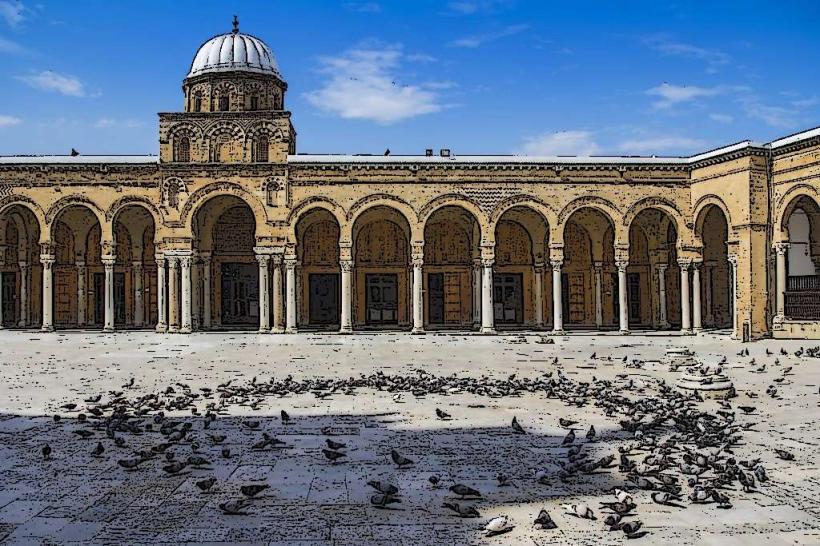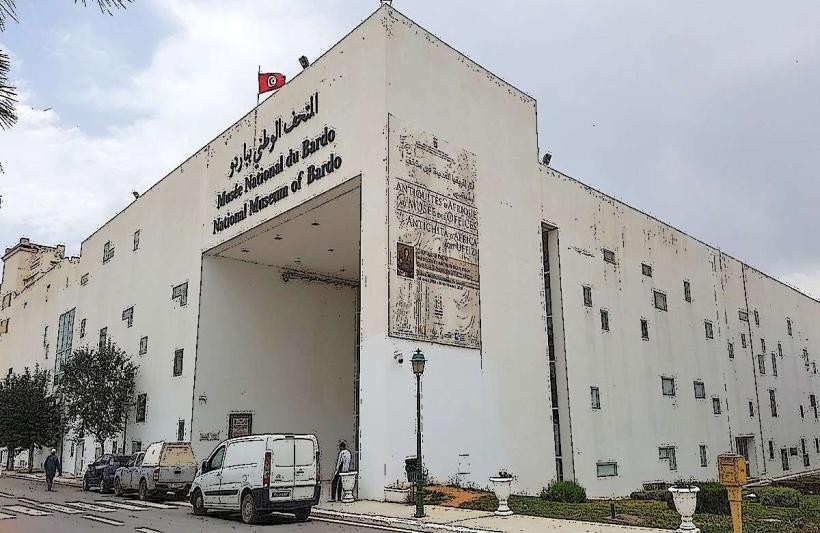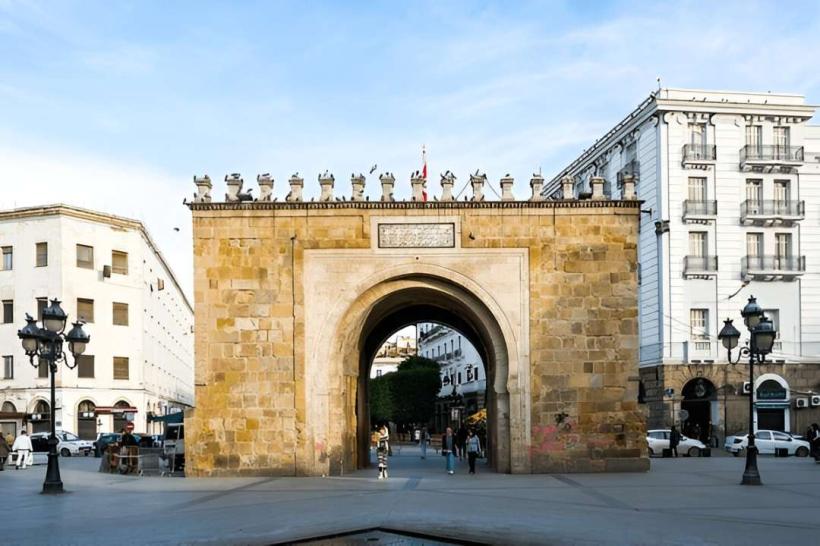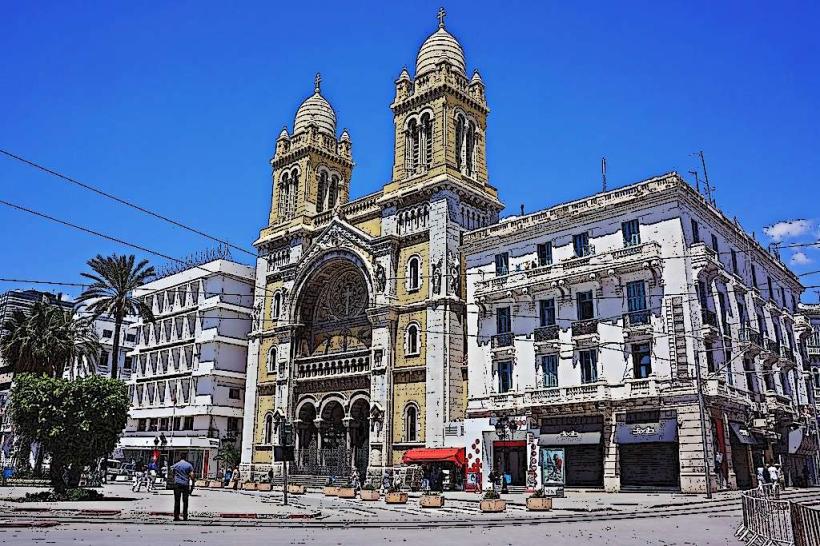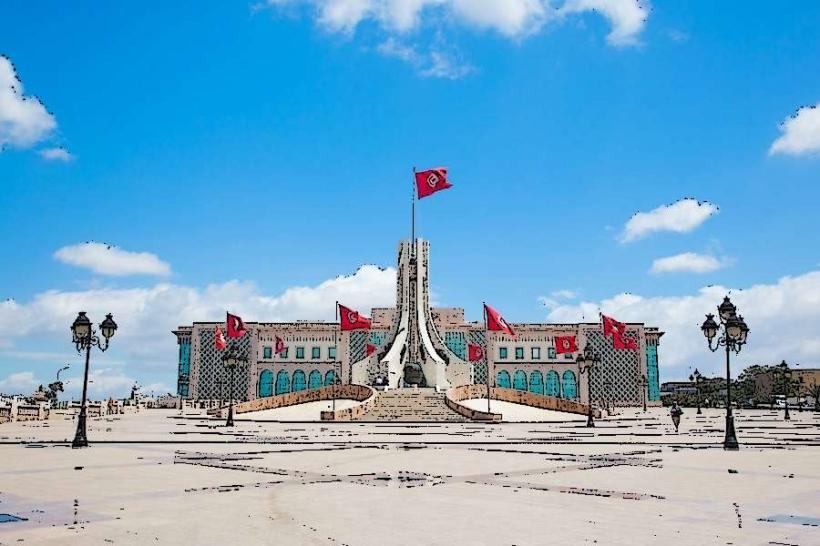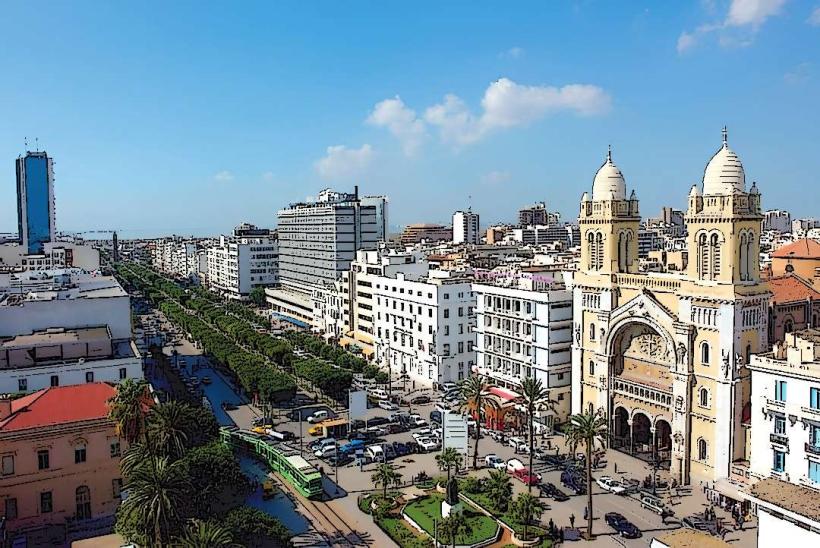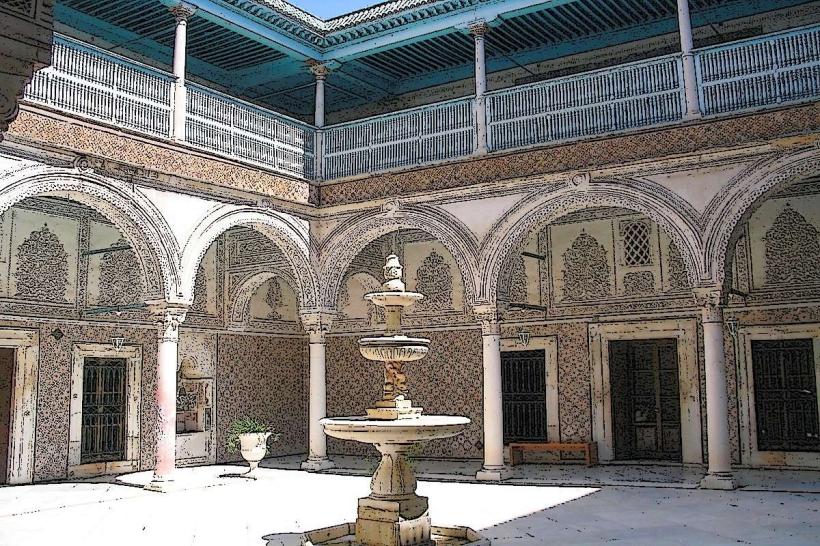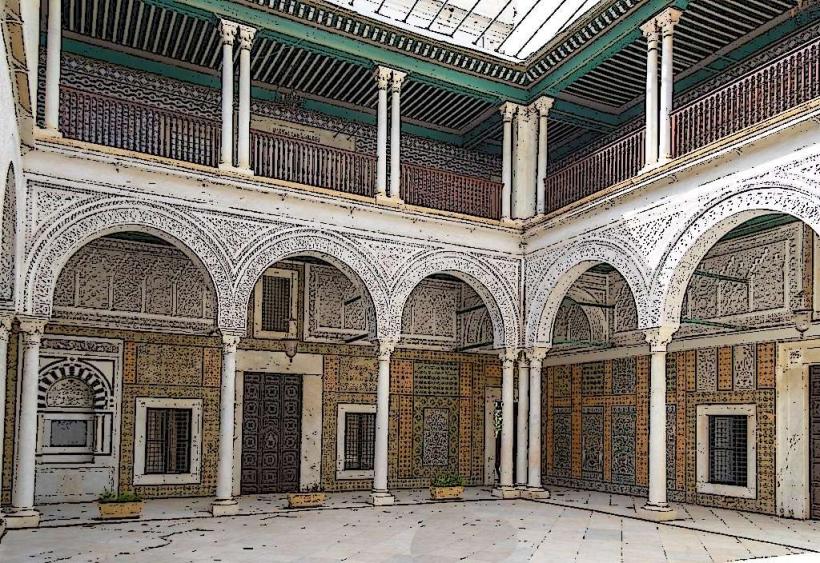Information
Landmark: Dar LasramCity: Tunis
Country: Tunisia
Continent: Africa
Dar Lasram, Tunis, Tunisia, Africa
Dar Lasram is a historic palace located in the medina of Tunis, Tunisia’s ancient walled city. This beautiful house stands out as a significant example of the luxurious urban residences that were built by the Tunisian aristocracy during the 18th and 19th centuries. It is also a reflection of the country’s rich Ottoman and Arab-Islamic architectural traditions.
Here is a detailed overview:
Historical Background
Dar Lasram was constructed in the 18th century by a wealthy and influential family during the Hafsid dynasty. The exact original owner is not definitively recorded, but the house later came to be associated with the Lasram family.
It was built as a lavish private residence that showcased the wealth and status of its owners, combining luxurious living with a sense of privacy, which was highly valued in traditional Tunisian homes.
Over the centuries, the palace changed owners and eventually fell into disrepair until it was restored and converted into a museum.
Architectural Features
Dar Lasram is a typical Dar (house) style residence, designed with a central courtyard, surrounded by rooms for the family and guests.
The palace is known for its elegant interior design, featuring a harmonious mix of Ottoman, Arab-Islamic, and Tunisian architectural elements.
The central courtyard is typically paved with intricate zellige tilework, decorated with geometric and floral patterns.
The rooms around the courtyard are adorned with stucco carvings and wooden ceilings decorated with Arabesque motifs.
The arches and vaulted ceilings reflect the Ottoman style, while the furnishings and materials used in the house reflect Tunisian taste and craftsmanship.
The mashrabiyas (wooden screens) in the windows provide privacy and a cooling effect while allowing light into the rooms.
The overall design places a strong emphasis on privacy and comfort, with spaces reserved for family life and others for receiving guests.
Museum and Cultural Significance
In the late 20th century, the palace was converted into a museum dedicated to Tunisian domestic life during the Ottoman period. It is known as the Museum of Traditional Arts and Crafts.
The museum showcases traditional Tunisian handicrafts, such as embroidered textiles, pottery, metalwork, and wooden furniture from the 18th and 19th centuries.
The exhibits highlight the daily life and domestic culture of Tunisian families from this period, offering insights into their material culture, clothing, and decorative styles.
Visitors to the museum can see objects that were integral to the life of the elite in Tunis, such as silverware, ceramic plates, and traditional carpets.
Notable Rooms and Features
Reception Rooms: The palace contains rooms designed for receiving guests, with furniture and decorations showcasing the artistic tastes of the time. The rooms are adorned with mosaic tiles, stucco reliefs, and elegant chandeliers.
Family Quarters: The inner parts of the palace feature more intimate settings, with cozy rooms where the family would have lived. These areas are designed to ensure privacy, in line with Islamic cultural norms.
Courtyards and Gardens: The central courtyard and the surrounding garden areas are calm spaces, often featuring fountains, stone paths, and tropical plants, providing both aesthetic pleasure and a sense of tranquility.
Location
Dar Lasram is located in the southern part of the medina, close to other notable landmarks such as the Zitouna Mosque and the Kasbah.
The medina’s narrow streets lead visitors to the palace, allowing them to experience the feeling of walking through the labyrinthine heart of Tunis’s historical center before arriving at the grand residence.
Cultural and Social Significance
Dar Lasram is not just an architectural masterpiece but also an important cultural hub. As a museum, it plays a key role in the preservation of Tunisian craftsmanship and provides a window into the social structure of 18th and 19th-century Tunisian society.
The Tunisian elite during this period had strong ties to the Ottoman rulers, and the palace’s design reflects both the Islamic values of privacy and the Ottoman influence on Tunisian culture.
The museum also reflects the traditional crafts and art of Tunisia, emphasizing local artisanship that played an essential role in the city’s economy and identity.
Notable Aspects
Preservation of Tunisian Heritage: The museum highlights the richness of Tunisia's domestic and craft traditions.
Architectural Beauty: The design of Dar Lasram is an outstanding example of traditional Tunisian architecture with its intricate tilework, wood carvings, and lush courtyards.
Cultural Identity: The palace stands as a symbol of Tunisia’s multicultural heritage and its historical link to the Ottoman Empire while also reflecting the social norms and domestic culture of a privileged Tunisian class.
Conclusion
Dar Lasram is a splendid example of Tunisian heritage, offering visitors a chance to experience the opulence of Tunisian aristocracy in the 18th and 19th centuries. As a museum, it provides a vital connection to Tunisia's past and stands as a testament to the country’s rich cultural and architectural legacy. It is a must-visit site for anyone interested in the artistic and historical traditions of Tunisia.

